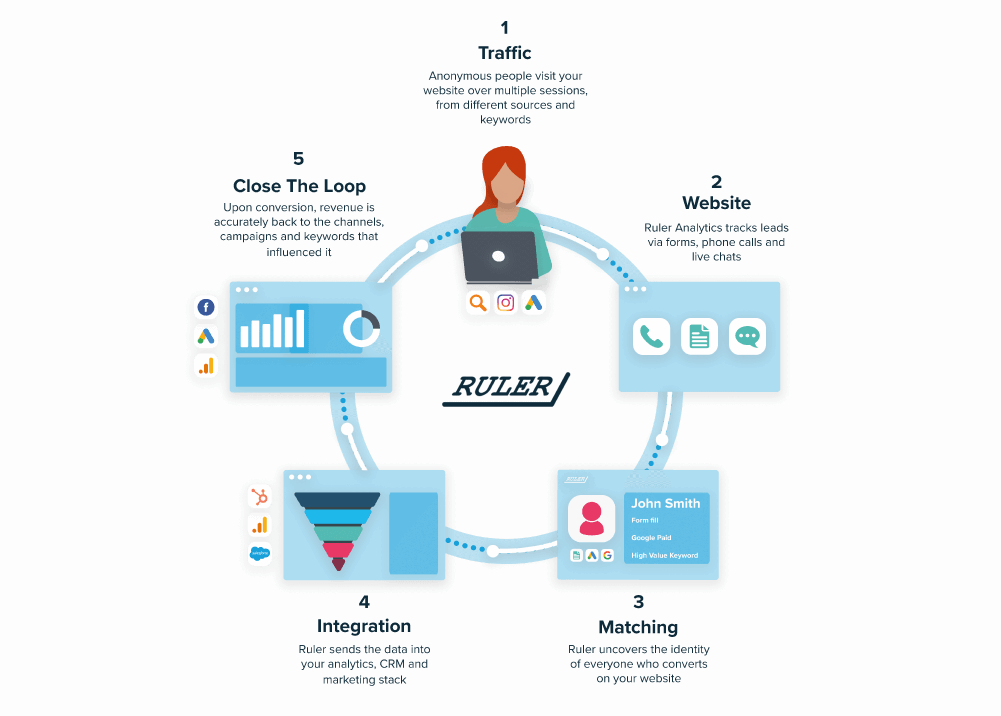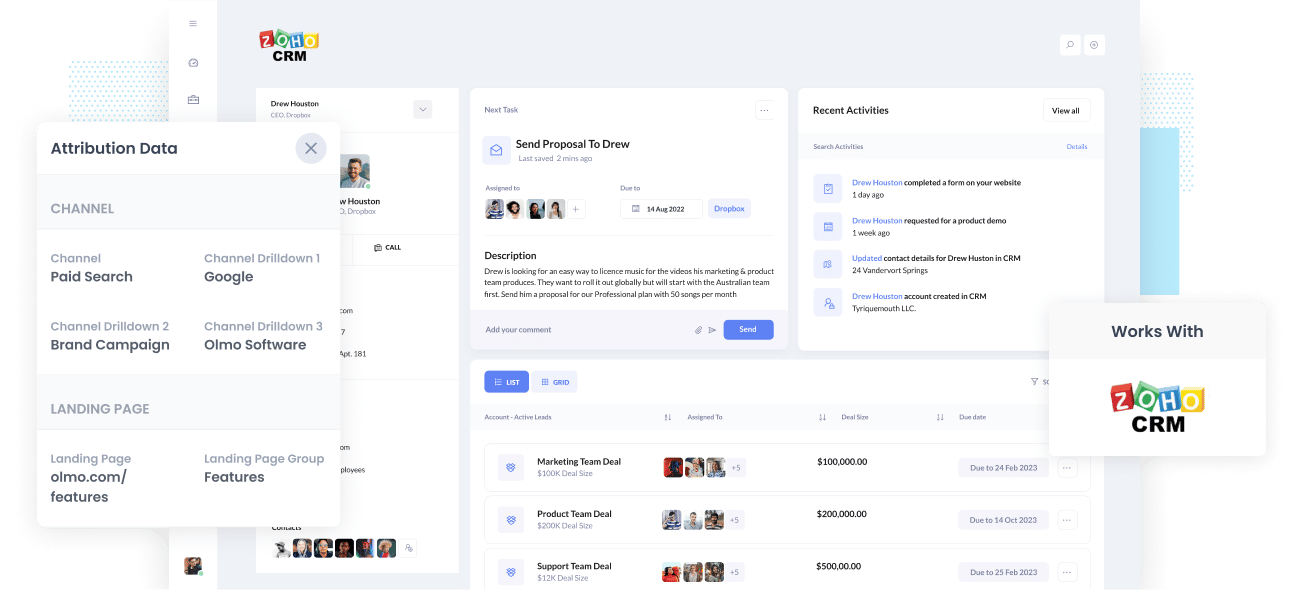
CRM with Lead Source Attribution: Maximizing ROI and Fueling Growth
In today’s hyper-competitive business landscape, understanding where your leads are coming from and how they convert is paramount. Customer Relationship Management (CRM) systems, when combined with robust lead source attribution, become powerful engines for optimizing marketing efforts, improving sales strategies, and ultimately, driving revenue growth.
What is Lead Source Attribution?
Lead source attribution is the process of identifying and assigning credit to the specific touchpoints or channels that influenced a prospect to become a lead. It’s about tracing the customer’s journey back to its origin, answering the crucial question: "How did this lead find us?"
This involves tracking and analyzing the various interactions a potential customer has with your brand before they express interest or convert. These interactions can include:
- Website Visits: Which pages did they view?
- Marketing Emails: Did they open and click on links?
- Social Media: Did they engage with posts or ads?
- Search Engine Queries: What keywords did they use?
- Referrals: Were they referred by an existing customer or partner?
- Offline Events: Did they attend a trade show or conference?
- Direct Contact: Did they call or email your sales team directly?
Why is Lead Source Attribution Important?
Lead source attribution is not just a "nice-to-have" feature; it’s a critical component of a data-driven marketing and sales strategy. Here’s why:
- Optimized Marketing Spend: By understanding which channels are generating the highest quality leads, you can allocate your marketing budget more effectively. Stop wasting resources on underperforming campaigns and invest in what works.
- Improved Lead Quality: Identify the sources that consistently deliver leads with a higher propensity to convert. Focus your efforts on nurturing these leads and tailoring your messaging to their specific needs.
- Enhanced Sales Effectiveness: Provide your sales team with valuable context about each lead’s journey. This enables them to personalize their approach, build rapport more quickly, and increase their chances of closing deals.
- Data-Driven Decision-Making: Lead source attribution provides actionable insights that can inform strategic decisions across your organization. Use the data to refine your marketing strategy, optimize your sales process, and improve your overall customer experience.
- Accurate ROI Measurement: Quantify the return on investment (ROI) of your marketing campaigns by tracking the revenue generated from leads acquired through each channel. This allows you to demonstrate the value of your marketing efforts to stakeholders.
- Improved Customer Journey Understanding: Gain a deeper understanding of how customers interact with your brand at different stages of the buying process. This knowledge can be used to optimize your website, content, and marketing campaigns to better guide prospects toward conversion.
How CRM Systems Enhance Lead Source Attribution
CRM systems are the central hub for managing customer data and interactions. When integrated with lead source attribution capabilities, they provide a powerful platform for tracking, analyzing, and optimizing the entire lead generation process.
Here’s how CRM systems enhance lead source attribution:
- Centralized Data Storage: CRM systems consolidate all lead data in one place, including contact information, interaction history, and lead source information. This eliminates data silos and provides a single source of truth for your marketing and sales teams.
- Automated Lead Capture: CRM systems can automatically capture lead data from various sources, such as website forms, email campaigns, and social media platforms. This eliminates manual data entry and ensures that all leads are accurately tracked.
- Lead Source Tracking: CRM systems allow you to track the original source of each lead, as well as any subsequent interactions they have with your brand. This provides a complete picture of the customer journey.
- Reporting and Analytics: CRM systems offer robust reporting and analytics capabilities that enable you to analyze lead source data and identify trends. This helps you understand which channels are performing best and where you can improve your efforts.
- Sales and Marketing Alignment: CRM systems facilitate collaboration between your sales and marketing teams by providing a shared view of lead data and performance metrics. This ensures that both teams are working toward the same goals and that leads are effectively nurtured throughout the sales process.
- Integration with Marketing Automation Tools: CRM systems can be integrated with marketing automation tools to automate lead nurturing and personalize the customer experience. This allows you to deliver the right message to the right lead at the right time, increasing your chances of conversion.
Types of Lead Source Attribution Models
There are several different attribution models you can use, each with its own strengths and weaknesses. The best model for your business will depend on your specific goals and the complexity of your customer journey. Here are some of the most common models:
- First-Touch Attribution: Gives 100% of the credit to the first touchpoint in the customer journey. This model is simple to implement but may not accurately reflect the influence of subsequent touchpoints.
- Last-Touch Attribution: Gives 100% of the credit to the last touchpoint before conversion. This model is also easy to implement but may overlook the impact of earlier interactions.
- Linear Attribution: Distributes credit evenly across all touchpoints in the customer journey. This model is more balanced than first-touch or last-touch but may not accurately reflect the relative importance of different touchpoints.
- Time-Decay Attribution: Gives more credit to touchpoints that occur closer to the conversion. This model recognizes that more recent interactions are likely to have a greater impact on the customer’s decision.
- U-Shaped Attribution (Position-Based): Gives 40% of the credit to the first touchpoint, 40% to the last touchpoint, and distributes the remaining 20% evenly across the other touchpoints. This model recognizes the importance of both the first and last interactions.
- W-Shaped Attribution: Gives 30% of the credit to the first touchpoint, 30% to the lead conversion touchpoint, and 30% to the opportunity creation touchpoint. The remaining 10% is distributed across other touchpoints. This is ideal for complex sales cycles.
- Custom Attribution: Allows you to create your own attribution model based on your specific business needs. This model provides the most flexibility but requires careful planning and analysis.
Implementing Lead Source Attribution with CRM
Here are the steps involved in implementing lead source attribution with your CRM system:
- Define Your Goals: What do you want to achieve with lead source attribution? Do you want to optimize your marketing spend, improve lead quality, or enhance sales effectiveness?
- Choose an Attribution Model: Select the attribution model that best aligns with your goals and the complexity of your customer journey.
- Configure Your CRM System: Set up your CRM system to track lead sources and interactions. This may involve creating custom fields, configuring integrations, and setting up automation rules.
- Track Your Data: Monitor your lead source data closely and ensure that it is accurate and complete.
- Analyze Your Results: Use your CRM system’s reporting and analytics capabilities to analyze your lead source data and identify trends.
- Optimize Your Strategy: Based on your analysis, make adjustments to your marketing and sales strategy to improve lead generation and conversion rates.
- Train Your Team: Ensure that your marketing and sales teams understand the importance of lead source attribution and how to use the CRM system to track and analyze data.
Best Practices for Lead Source Attribution
- Use UTM Parameters: Utilize UTM parameters in your marketing URLs to accurately track the source of website traffic.
- Integrate Your Systems: Integrate your CRM system with your marketing automation platform, advertising platforms, and other relevant tools.
- Regularly Review and Update Your Attribution Model: As your business evolves, your attribution model may need to be adjusted to reflect changes in the customer journey.
- Focus on Data Quality: Ensure that your lead data is accurate and complete to get the most out of your lead source attribution efforts.
Conclusion
CRM with lead source attribution is a powerful combination that can transform your marketing and sales efforts. By understanding where your leads are coming from and how they convert, you can optimize your marketing spend, improve lead quality, enhance sales effectiveness, and ultimately, drive revenue growth. By implementing a robust lead source attribution strategy with your CRM system, you can unlock valuable insights that will help you make data-driven decisions and achieve your business goals.

